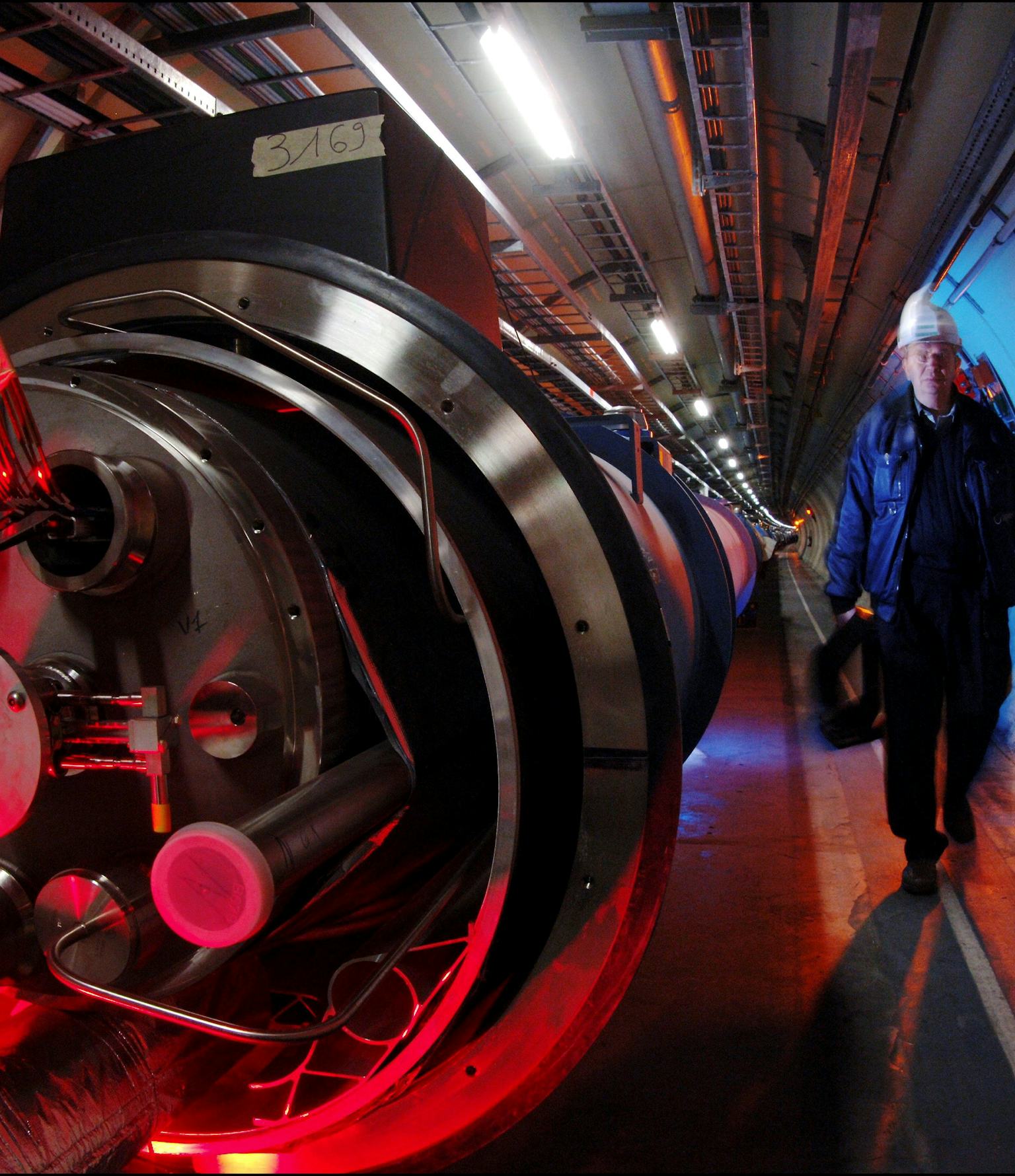The Large Hadron Collider (LHC), a monumental scientific apparatus situated at CERN near Geneva, Switzerland, is arguably one of the crown jewels in modern physics. This colossal structure, spanning a circumference of approximately 27 kilometers (16.8 miles), serves as a particle accelerator that propels protons and heavy ions towards velocities approaching the speed of light. The extraordinary energies achieved within this intricate facility allow physicists to explore fundamental questions regarding the very nature of matter, the fabric of the universe, and perhaps even the hidden dimensions of reality.
At the core of the physics behind the LHC lies the principle of acceleration and collision. The LHC employs a mechanism known as the electromagnetic field, which is utilized to propel charged particles through successive stages of acceleration. These particles, typically protons, are injected into the LHC and subjected to powerful magnetic fields produced by superconducting magnets. The act of acceleration does not merely increase velocity; it amplifies the kinetic energy of the particles, allowing them to reach energies corresponding to several tera-electronvolts (TeV). This is critical, as higher collision energies enable the exploration of rarer processes and phenomena not observable under conventional energy conditions.
Once accelerated, the protons are directed towards one another in carefully orchestrated collisions. Each collision generates a malleable sea of energy, giving birth to new particles in accordance with Einstein’s famous equation, E=mc². This equality signifies that energy can manifest as mass, a notion that fundamentally challenges our perceptions of reality. Notably, the Higgs boson—an elusive particle that imbues mass to other fundamental particles—was discovered in 2012, a triumph attributed to the LHC. This discovery not only corroborated an essential aspect of the Standard Model of particle physics but also reignited interest in the mechanisms of mass generation itself.
Moreover, the scrutiny of high-energy collisions reveals insights into the symmetry of fundamental forces. The unification of electromagnetic forces with weak nuclear interactions is a tantalizing prospect that physicists have sought for decades. The LHC’s capacity to probe conditions mimicking those just after the Big Bang amplifies its importance; it functions as a time machine, allowing us to extrapolate about the early universe’s dynamics and the forces at play. As particles collide at incredible speeds, researchers study the resulting debris with detectors that capture various signatures, such as decay patterns and energy distributions.
An interesting facet of the LHC’s operation involves the concept of “fine-tuning” the collision conditions. The precision required to collide particles head-on within a mere millimeter is monumental. It necessitates meticulosity in both the timing and positioning of beams. Achieving such exactitude is imperative since only a minuscule fraction of the collisions yields valuable data. With sophisticated detectors such as ATLAS and CMS, data is recorded and analyzed, providing a treasure trove of information that must be meticulously filtered through colossal amounts of computer processing.
Beyond particle collisions, examining heavy-ion collisions, such as lead-lead collisions, is a key feature of the LHC’s research agenda. These experiments allow physicists to recreate conditions akin to those moments after the Big Bang, providing a glimpse into the primordial quark-gluon plasma—a state of matter wherein quarks and gluons are no longer confined within protons and neutrons. This investigation deepens our understanding of the fundamental forces that govern the universe, elucidating how such states may have played a pivotal role in the formation of matter as we know it.
Additionally, the LHC delves into questions of dark matter and dark energy. Altogether, these enigmatic constituents account for approximately 95% of the universe’s total mass-energy content. They remain elusive, primarily because they do not interact with ordinary matter via electromagnetic forces, making them imperceptible to conventional detectors. Through experimental results that suggest the presence of supersymmetric particles or other exotic candidates, the LHC provides invaluable insights that challenge existing paradigms and stimulate new hypotheses.
The ongoing quest for knowledge through the LHC has also stirred philosophical dialogues regarding the nature of reality itself. As discoveries unfold—e.g., the potential for extra dimensions or the validation of new theoretical models—they challenge established ontologies and provoke reflections on the very essence of existence. Concepts such as the multiverse, while speculative, gain traction and provoke profound inquiries into the architecture of the cosmos beyond the confines of established physical law.
In summation, the physics underlying the Large Hadron Collider extends far beyond mere particle smashing. It invokes an intricate tapestry of principles spanning electromagnetism, quantum mechanics, and cosmology. As researchers glean data from the LHC’s extraordinary endeavors, they not only unveil the secrets of the universe but also invite an evolution of thought that compels humanity to reconsider its place within the cosmos. Each experiment and collision serves as a testament to the ingenuity of human exploration and the relentless pursuit of knowledge, prompting us to ponder not just what we know, but what lies beyond the horizon of our understanding.












